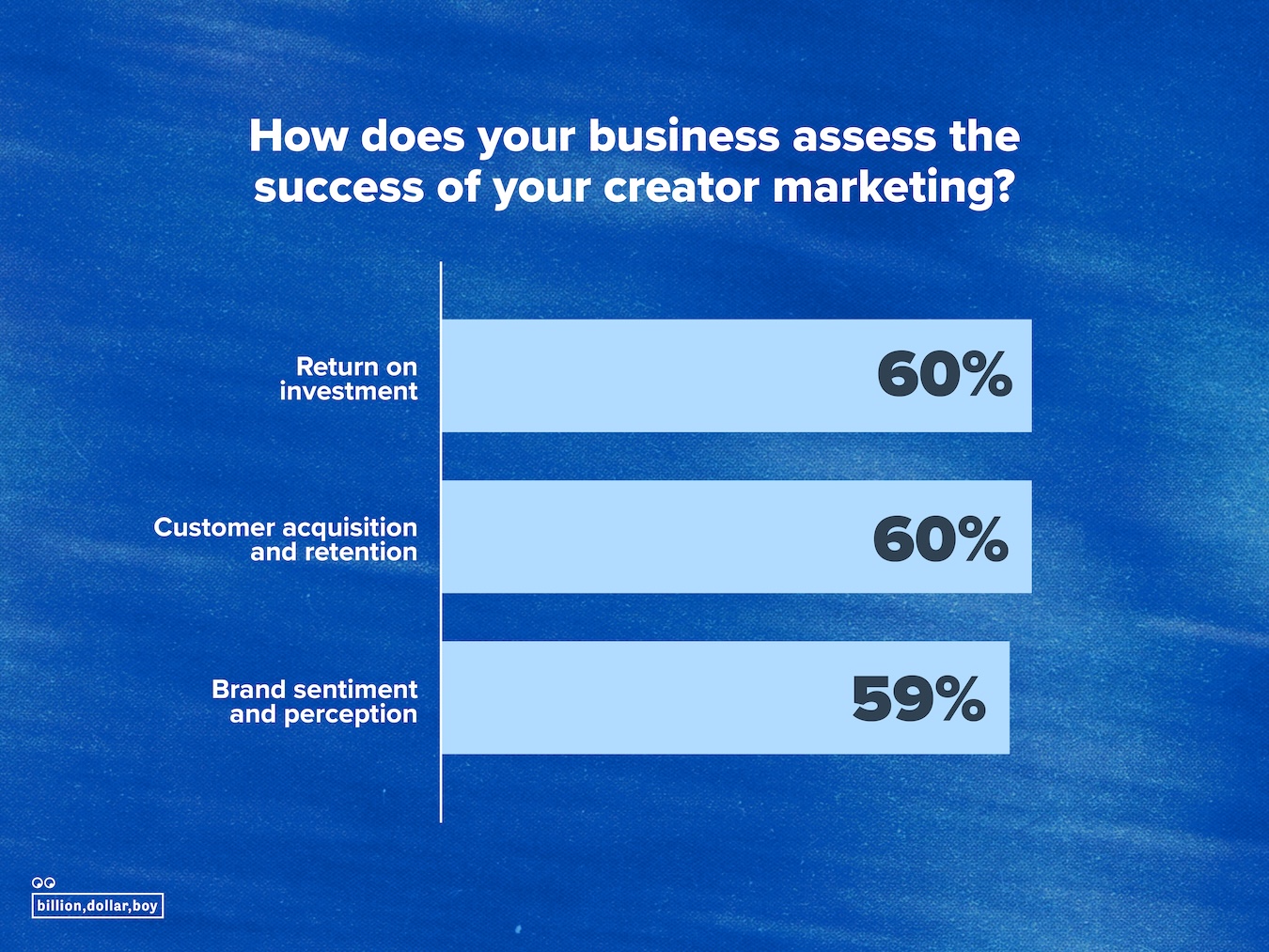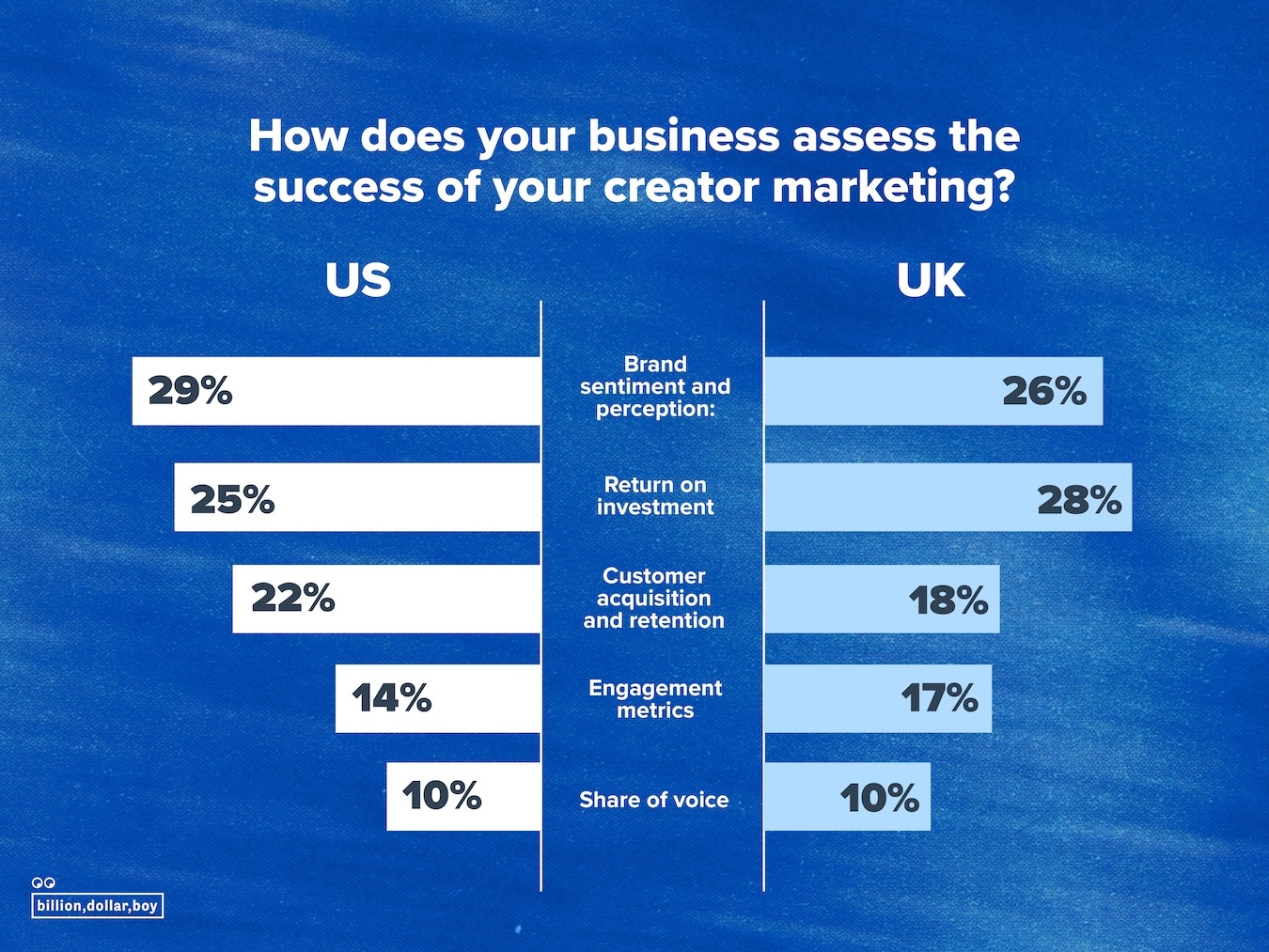New independent research by global creator-first social agency, Billion Dollar Boy, reveals an important disconnect between how creator marketing objectives are set and how success is measured – highlighting a structural gap that could undermine the channel’s full potential.
Surveying 2,000 senior marketers across the US and UK, the research finds that while creator campaigns are primarily designed to build brand awareness and reach new audiences, success is most often measured by ROI and customer acquisition. This tension between creative intent and performance expectations may be limiting both effectiveness and innovation.
Creator Marketing Designed for Awareness, But Judged on ROI
Creator marketing continues to mature into a full-funnel, mainstream marketing channel, supported by growing investment – with 71% of US marketers and 52% of UK marketers spending in excess of $1M (£765K) annually, according to the research.
This evolution is reflected in the wide range of objectives that marketers most commonly aim to achieve with creator marketing. When asked to select their top three priorities during the campaign planning phase, they said:
- Increasing brand awareness: 41%
- Reaching new audiences: 37%
- Driving sales and conversions : 35%
- Engaging with new demographics: 25%
- Building brand loyalty: 25%
- Supporting product launches: 19%
- Changing brand perceptions: 15%
The most common creator marketing objectives – growing brand awareness (41%) and reaching new audiences (37%) – suggest a clear focus on upper-funnel brand building. Yet nearly as many marketers (35%) also cite sales and conversions as key objectives, revealing the pressure creator campaigns face to deliver on both sides of the funnel.

Legacy Metrics Undermine Evolving Goals and Capabilities
Despite creator marketing’s shift toward full-funnel integration, many organizations continue to operate with legacy models and metrics that don’t reflect this new reality.
This is leading to a misalignment in creative ambition and performance pressure, with marketers most commonly measuring creator marketing success by return on investment (60%) and customer acquisition (60%):
- Return on investment: 60.47%
- Customer acquisition and retention: 60.27%
- Brand sentiment and perception: 59%
- Engagement metrics: 53%
- Share of voice: 40%
This disconnect highlights a structural issue: marketers are briefing creator campaigns to build brand equity but assessing them against performance KPIs.
This tension exists because creator marketing has rapidly matured into a mainstream, high-investment channel and is now powerful for both building deep brand equity, and effectively driving direct performance and sales. Yet, the systems and mindsets needed to sustain and scale that momentum haven’t kept pace.
The research results reinforce the need for the industry to build better systems that protect creativity, support innovation, and tie directly to ROI. Without accurately aligning expectations internally or resourcing the channel appropriately for dual goals – brand awareness and performance – brands risk undervaluing the channel’s impact and creating friction between creative ambition and commercial outcomes.
Accurately measuring creator campaigns and proving impact often requires the right tools. Built over 11 years, Billion Dollar Boy’s creator advertising platform, Companion, tracks full-funnel performance. From campaign outputs and share of voice to outcome-focused metrics across brand and direct sales effects, it provides a full view of effectiveness in one centralised platform to provide visibility across the funnel. Supported by AI-powered tools and dedicated partners, Billion Dollar Boy’s measurement stack continues to evolve to meet marketers’ needs with creative testing and brand lift analysis linking emotional impact with commercial outcomes.

Simon Harwood, Global Effectiveness Director at Billion Dollar Boy, explains: “Creator marketing is scaling, developing from a bolt-on marketing tactic to a key brand-building channel. But the pace of change has left internal processes struggling to keep up.
“Our analysis reveals that marketers lack a clear consensus on what creator marketing is used for and how success should be defined – often briefing campaigns to build brand equity, but evaluating them as if they were pure performance plays. That’s a structural gap.
“The issue is often one of internal misalignment. Without the right expectations, resourcing, and measurement in place to support both goals, creator marketing is being set up to fall short.
“The reality is that impactful creator content can deliver both short-term sales and lasting brand-building effects. Measurement needs to be set up to fully evaluate both types of outcome”.
“To realise its full value, we need to close the gap between what we’re asking creators to deliver and how we define success. Align briefs with business goals, measure what we set out to achieve, and give creators the space to build both brand equity and commercial impact.”
← Back to News